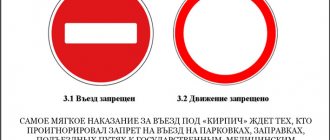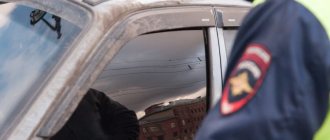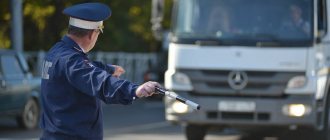The movement of cars is subject to strict rules that increase the safety on the road for both motorists and other road users.
Dear readers! The article talks about typical ways to resolve legal issues, but each case is individual. If you want to find out how to solve your particular problem , contact a consultant:
+7 (499) 938-81-90 (Moscow)
+7 (812) 467-32-77 (Saint Petersburg)
8 (800) 301-79-36 (Regions)
APPLICATIONS AND CALLS ARE ACCEPTED 24/7 and 7 days a week.
It's fast and FREE !
The railway crossing stands out separately, which has an increased danger, since trains move very quickly and cannot stop in a short time.
Therefore, for violating the rules of behavior on the road, and especially in the crossing zone, severe punishment is imposed, including a driving ban.
Therefore, it is necessary to figure out what the fine is for overtaking at a railway crossing in 2021, since this offense is gross.
In what cases is overtaking allowed and when is it prohibited?
It should be noted that, in general, any crossing of the railway is allowed, in accordance with the requirements of paragraph 15.1 of the traffic rules, only at the crossing. A driver who crosses the rails outside the designated area will face a rather severe administrative penalty.
The very concept of overtaking is relevant for the most part when the road consists of two lanes for automobile traffic: one for each direction. When there are more of them, it is possible to get ahead of the curve, avoiding moving into the oncoming traffic.
Overtaking is a type of maneuver that involves entering the lane of traffic in the oncoming direction. The action is performed to get ahead of the moving car, it certainly ends with a return.
Advancement is movement without entering the lane of oncoming traffic at a speed greater than that of a passing vehicle (other vehicle).
According to the requirements of paragraph 11.4 of the traffic rules, overtaking moving vehicles at railway crossings or at a distance closer than 100 meters to it is prohibited: committing such an action will constitute an administrative offense for which a person will be punished. It is often committed by impatient drivers who want to “skip” the railway tracks as quickly as possible, subsequently paying a fine.
However, other situations may arise in this section of the canvas.
A detour is a maneuver performed in the presence of an obstacle, associated with entering the lane of oncoming traffic or into an adjacent oncoming lane, or without leaving the occupied lane.
If the road consists of two or more lanes for movement in each direction, at a railway crossing it formally becomes possible to get ahead of the car or go around an obstacle. However, it is extremely important to ensure that the road is adequately clear of oncoming traffic before leaving your lane, as you are in a high-risk area.
Not all road-railway intersections have a good viewing angle. It happens that the highway meets them in a sharp turn zone. In such a place it is better not to advance, since it is impossible to control the oncoming flow in conditions of insufficiently visible terrain.
Some drivers mistakenly think that on a road that has three lanes, it is allowed to detour and get ahead even on the tracks: after all, the middle one is intended for both directions of traffic. This is not true: it is considered to be both a passing and a counter vehicle at the same time, and you will also have to pay an administrative fine for traveling on it.
Another similar situation is the need to go around an obstacle that has arisen in front of the car.
An obstacle is a stationary foreign object or a faulty, damaged car, a serious defect in the road surface that makes it impossible to move in your lane.
It should be taken into account that vehicles that have stopped in accordance with the traffic rules, as well as the resulting traffic jam, are not considered obstacles.
For detours, the same rules apply as for ahead of vehicles on railway tracks. However, there is one caveat here. Paragraph 15.3 of the traffic rules states that the driver of a vehicle does not have the right to make a detour around vehicles standing in front of the rails, which involves driving into oncoming traffic. But it’s not the only thing that can get in the way of a car.
If traffic is impeded, for example, by a pile of debris, a fallen tree, or a destroyed part of the road surface, the presence of a broken marking line allows maneuvering. With prohibitory markings and the absence of other options, many drivers, in order to get to their destination, violate Part 1 of Article 12.16 of the Code of Administrative Offenses of the Russian Federation.
In this case, the traffic rules requirements have a gap, which is the subject of much debate. After all, it is strictly forbidden to cross marking 1.1 (single solid line) from any side. The choice remains with the person, but it should be remembered that the traffic police inspector who has identified an offense will certainly draw up an administrative protocol according to which a punishment will be imposed.
Need to know:
- The only option in a hopeless situation may be to film the traffic situation with a mobile phone camera.
- You can try to appeal the decision in court, then there is a possibility that it will be canceled and, on the basis of Article 2.9 of the Code of Administrative Offenses of the Russian Federation, the driver will be released from administrative liability due to the fact that the violation is insignificant.
In most cases, motorists drive along the same routes, that is, they know in advance that they will have to cross a railway crossing. Therefore, it is better to immediately prepare, assess the situation and try in any way not to violate the rules prescribed by law: they should always be a priority.
Responsibility for violations of the rules
For violating the rules for crossing railway tracks, the driver will face the following sanctions:
- For overtaking at a crossing or at a distance of less than a hundred meters before it: a fine of 5,000 rubles or deprivation of a driver’s license for a period of 4-6 months. As practice shows, drivers are more often punished severely - with deprivation of a driver's license. For a repeated violation, the motorist will have to say goodbye to his license for a year.
- For passing a vehicle into oncoming traffic on the tracks or at a distance of less than one hundred meters before it: a fine of 1000-1500 rubles.
- A fine of 1,000 rubles is imposed for stopping at a railway crossing or 100 meters before it.
- For ignoring a stop sign - a fine of 800 rubles.
If the amount of debts for all fines exceeds 10 thousand rubles, then the driver’s license may be temporarily suspended.
Traffic on a controlled crossing
Such engineering structures include intersections of highways and railway tracks, equipped with special signaling devices that emit a loud sound when a train approaches on the rails. In addition, controlled crossings can be serviced by an employee on duty at JSC Russian Railways or another employee of the owner of tracks not intended for public use. There may be a barrier or special metal shields blocking the path.
The first information (warning) sign is placed 150-300 meters from the object outside the city limits, and 50-100 meters within the boundaries of the populated area. It can denote a crossing equipped with a barrier (1.1) and an object without it (1.2).
For the convenience of assessing the distance, the roadway is equipped with signs 1.4.1-1.4.6 (“Approaching a railway crossing”). They represent a white background on which inclined red stripes are applied: three, two or one. As you approach the structure, their number decreases. They help you navigate and determine in which zone the maneuvering ban begins to apply and where you need to reduce speed.
It is prohibited by law not only to overtake, but also to enter the controlled crossing itself:
- if the barrier or shield is lowered;
- if the traffic light gives a prohibition signal (even if the barrier is raised);
- when an employee gives a prohibitory sign using a red light, a bright flag or taking a pose with straight arms spread to the sides;
- when a traffic jam forms behind the crossing, which will not allow you to completely cross the rails.
In addition, the use of reverse gear is strictly prohibited within the facility.
Under no circumstances should you attempt to manually lift a barrier or metal shield. Drivers of slow-moving vehicles may cross railway tracks only with permission from the crossing worker.
The boundaries of the crossing area itself are indicated using signs 1.3.1 or 1.3.2. It is in the interval between the first and second sign that prohibitions apply directly to movement across railway tracks.
○ Nuances and resolution of controversial issues.
Some situations become a real stumbling block and cause heated disputes between traffic police inspectors and drivers. Often the barrier rises before the prohibitory traffic light goes out. Most drivers are in a hurry to continue driving and after a few meters they find themselves stopped by inspectors who accuse them of passing a prohibitory signal . In this case, you should refer to the Operating Instructions for Railway Crossings, according to the rules of which the red signal should not light up .
Problems with a car that cause it to stop at a crossing are perhaps the most dangerous. Clause 15.5 of the Traffic Regulations describes in detail the behavior of the driver and passengers of a car stuck on the rails:
- “When forced to stop at a crossing, the driver must immediately unload people and take measures to clear the crossing. At the same time, the driver must:
- If possible, send two people along the tracks in both directions from the crossing 1000 m (if one, then in the direction of the worst visibility of the track), explaining to them the rules for giving a stop signal to the driver of an approaching train.
- Stay near the vehicle and sound the general alarm.
- When a train appears, run towards it, giving a stop signal.
- Note. The stop signal is a circular movement of the hand (in the daytime with a piece of bright material or some clearly visible object, at night - with a torch or lantern). The general alarm signal is a series of one long and three short beeps.”
These rules are dictated by safety regulations and protection of the lives of the driver and passengers. A collision with a train at speed will turn the car into a pile of iron, what will happen to the people inside is clear without explanation. Due to the enormous mass, the rolling stock has a very long braking distance and stopping must begin as early as possible. The more the “messengers” travel, the greater the chance for a successful outcome.
At the same time, problems threaten not only the driver who is standing at the crossing, but also the one who was driving behind him and was already behind the traffic light. In this situation, pay attention to the type of move. If its width is less than 7 meters, then you can safely stand and wait until the problem that has arisen ahead is resolved, fortunately they try to remove such cars as quickly as possible. But if there is a wide multi-rail crossing in front of you, then such a forced stop will already be a violation. Usually inspectors are limited to 1000 rubles. fine under Part 2 of Art. 12.10 Code of Administrative Offenses, but especially zealous ones try to deprive people of their rights. All that remains is to write about your disagreement due to the incorrect qualification and appeal the decision in court.
Traffic on an unregulated crossing
An object is considered such if there is no signaling equipment on it, and there is no maintenance by duty personnel or other employees who control the movement of cars across the rails. Unregulated railway crossings are also indicated by special warning signs (1.3.1, 1.3.2, 1.4.1-1.4.6). If they are not installed, crossing the paths is strictly prohibited.
Unregulated structures are usually equipped with:
- Marking 1.12 “Stop line”.
- Sign 2.5 prohibiting further movement without stopping.
The likelihood of safe passage to the other side of the railway track in such a place is determined by the driver himself, who is obliged to assess the situation.
Overtaking at an unregulated railway crossing is also strictly prohibited by the Traffic Rules. In accordance with the markings, it is allowed to get ahead of or go around the obstacle: there is no difference between the types of crossings.
You can begin moving towards the railway rails with the aim of crossing them only after the vehicle traveling in front has moved to the other side and has covered a distance from the tracks at least equal to the length of your car.
This rule is important to follow, since any vehicle can stall or suddenly stop directly behind the rails. As a result, the person following will be forced to brake right on the tracks. If there is an approaching train in the visibility zone, it is prohibited to drive beyond the stop line and cross. If it is absent, you should stop 10 or more meters before the nearest rail.
Overtaking before an unregulated crossing must be completed, as in the case of equipped objects, at least 100 meters before it.
Types of railway crossings
A railroad crossing is the intersection of a roadway and a railroad. Moves can be regulated or unregulated, as well as public or non-public.
- Public: a public railway intersects with a public road.
- Non-public use: intersection of railway tracks with highways of individual enterprises or organizations (regardless of ownership).
Adjustable crossings are equipped with special structures and sound warning devices. They can be equipped with barriers, semaphores, and metal shields that rise from the road surface and block the passage of cars.
At unregulated crossings there are no special signs or structures, and there is no person on duty. Traffic on them is regulated only by traffic regulations.
In addition, there are categories of railway crossings:
- crossings at intersections of railway tracks with roads of categories I and II, intersections of four or more main routes, as well as intersections with streets and roads along which regular public transport traffic occurs;
- crossings at the intersection of railway tracks with roads of III category:
- with roads and streets that have regular public transport traffic, but with an intensity during peak hours of less than 8 trains and buses per hour;
- with city streets that do not have trolleybus or bus traffic.
- when the maximum daily moving work exceeds 50 thousand train crews on the highway;
- in case of intersection of three main routes;
- crossings at the intersection of railways with highways and horse-drawn roads with the greatest daily work of more than 10 thousand train crews and satisfactory visibility and more than 1000 train crews with unsatisfactory visibility, if by all other indicators they cannot be classified as crossings of categories I and II ;
- all other crossings with sections of intersections of infrequently used roads.
Overtaking before and after railway tracks
So, we have found out in what situations a complete ban is imposed on performing a maneuver. Now it’s worth figuring out when, being near the tracks, overtaking is possible, and what you need to know in order not to violate traffic rules.
As mentioned earlier, the maneuver is prohibited at a distance of less than 100 meters from the object. Of course, this line is not specifically marked on the roads. The driver here will only be helped by an eye sensor, as well as the location of sign 1.4.1 or 1.4.4 (three red stripes on a white background). If, while passing one of them, the driver has already started overtaking, it must be completed before the next one - 1.4.2 or 1.4.5 (two lanes).
Within a populated area, the prohibited “hundred-meter walk” begins immediately after sign 1.1 (1.2). Therefore, it is important to see it in advance.
Important to remember:
- If you notice the desired sign as you begin to perform the maneuver, it would be better not to complete it.
- To avoid violating the rules, you must slow down, let the overtaken vehicle move forward and return to your lane, taking a place behind it.
Formally, traffic regulations allow overtaking after a railroad crossing.
However, immediately after the tracks, in many places signs prohibiting maneuver are installed (3.20, 3.22), and speed limits are also introduced. This measure is advisable to ensure safety on such a risky section of the roadway. Therefore, you will have to wait to overtake until you pass a sign lifting the ban, or until the first intersection. Inside a populated area, in the absence of intersections, the ban is valid until leaving the countryside. It must be remembered that the effect of the sign does not end in the exit zone from the adjacent territory, as well as at the junction (intersection) of dirt roads that are not marked in accordance with the traffic rules.
Is it possible to mitigate the punishment?
The penalty for overtaking can be mitigated only if it is interpreted as an advance. But for this to happen, there must be at least two lanes of passing traffic on the road, and the driver who made the maneuver did not drive into oncoming traffic.
If you stop at a railway crossing, you may face a fine, but if you prove that it was forced, you will be able to avoid it. It is necessary to indicate in the protocol the circumstances under which the maneuver was performed. For example, a forced stop was made due to a vehicle malfunction that prevented the vehicle from continuing to move. It is important to indicate that the driver took all the measures specified in clause 15.5 of the Russian Traffic Regulations.
If the driver committed a clear violation of the rules and the case went to court, then the following circumstances may mitigate the punishment:
- the offense was committed by a pregnant woman or a woman with a young child (under 14 years of age);
- the offender realized his guilt, admitted it and repented;
- violation of traffic rules is caused by strong excitement or emotional distress due to personal circumstances (for example, the death of a close relative);
- the offender prevented the harmful consequences that arose as a result of his offense.
However, these points may not be taken into account by the court. They only provide the possibility of mitigating the punishment.










